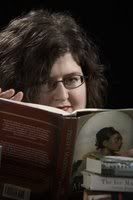 William Wilson, a down-at-the-heels conjurer, is engaged as the warm-up act to a pair of “dancers” at Inspector James Montgomery’s retirement party. Put up for the job by his friend Sam, he realizes that the skills he was hired for had nothing to do with the stage and everything to do with his skill at picking pockets. When a theft sets off a chain of events leading to the death of Sam and his partner, William spends the next year on the run, trying to evade his own conscience and, more pressing, the man whose secret he now possesses. Set in the gritty pubs of Glasgow and London, as well as Berlin’s seedy cabaret scene, The Bullet Trick is an adults-only tale, flashing between past and present, blurring the line between illusion and reality.
William Wilson, a down-at-the-heels conjurer, is engaged as the warm-up act to a pair of “dancers” at Inspector James Montgomery’s retirement party. Put up for the job by his friend Sam, he realizes that the skills he was hired for had nothing to do with the stage and everything to do with his skill at picking pockets. When a theft sets off a chain of events leading to the death of Sam and his partner, William spends the next year on the run, trying to evade his own conscience and, more pressing, the man whose secret he now possesses. Set in the gritty pubs of Glasgow and London, as well as Berlin’s seedy cabaret scene, The Bullet Trick is an adults-only tale, flashing between past and present, blurring the line between illusion and reality.Louise Welsh’s The Bullet Trick is a dark, yet exaggerated, noir tale that reads like a novel from an earlier time. Named after a dangerous magic trick in which a magician appears to catch a bullet in his mouth after the gun is fired directly at him, Welsh’s novel does feature a variation of this classic act; however, in this version, Wilson is the one with the gun in his hand.
Wilson is a conjurer, guiding his audience’s attention through the use of psychology, forcing them to see what he has created. Like a master conjurer, author Welsh uses words to create the burlesque and illusions that keep her readers’ attention directed where she desires while skillfully working her slight of hand. Welsh is known for her highly evocative, yet economical language:
“Get over whatever it is that’s bothering you, because right now you’re going in one of two directions, the jail or the morgue. Now piss off. And remember, this is my local.”Elements of The Bullet Trick are drawn from Welsh’s own trip to Berlin: the clockwork toys sold at Chamäleon Varieté, the acts taking turns serving drinks at Kleine Nachtrevue, the topless male aerialist plunged repeatedly into a bath of water to the sounds of “In The Heat of the Night” also at Chamäleon Varieté and the girl twirling dozens of hula hoops about her person at The Winter Garden. These small elements are minor details in the scope of the novel but add verisimilitude to this complex work. In an article written for the British newspaper Guardian Unlimited, Welsh stated “It's my lifelong ambition to be able to distinguish glamour from sleaze. Perhaps Berlin would teach me the difference.” If The Bullet Trick is any indication, Welsh certainly fulfilled her desire.
I looked around at the tired décor, the deflated men, the uneasy chairs, then back at the police inspector supping his first pint of the day at eight in the morning and said the worst thing I could think of.
“Aye, it suits you.”
While many readers found The Cutting Room much too disturbing, what is unsettling in The Bullet Trick is subtler. Violence is a core theme of both The Cutting Room and The Bullet Trick. One of Wilson’s inamoratas questions him about the violence in his act, “…And you like the torture stuff?” After Wilson states he is not into pain, she shoots back with, “Not for yourself perhaps, but you chop women in two, stick them full of knives then shoot them…You don’t need women’s blood to make you look talented.”
Welsh cleverly weaves violence and illusion together to gradually force a question into her readers’ consciousness: why do people find violence against women “as art” enthralling? While no answer is provided, the awareness of the question adds to the dark seediness and sense of voyeurism present in The Bullet Trick.
Throughout this new offering Wilson suggests that conjurers are god-like on stage:
“Beyond the edge of the stage there was nothing but black punctuated by the candle flames glowing out of the darkness. God looked out into the firmament and saw nothing. Then he snapped his fingers and created the world. I gave the slightest of bows, and got on with it.”Welsh, through continuing mastery of her craft, shows readers that the ability to create worlds is not limited to conjurers.
Publication Date: July 7, 2006
Publisher: HarperCollins Canada
ISBN10: 0002005999
See the review posted at Front Street Reviews.
tags: books book reviews bullet trick louise welsh mystery


3 comments:
Stop it! Stop it! Stop it!
Another book to add to my wishlist! I read The Cutting Room when it first came out in paperback and loved it.
Sorry! LOL, I'll try to pick books that don't match your tastes from here on in.
Yes, I think that would be a good idea, Janelle. ;)
Post a Comment